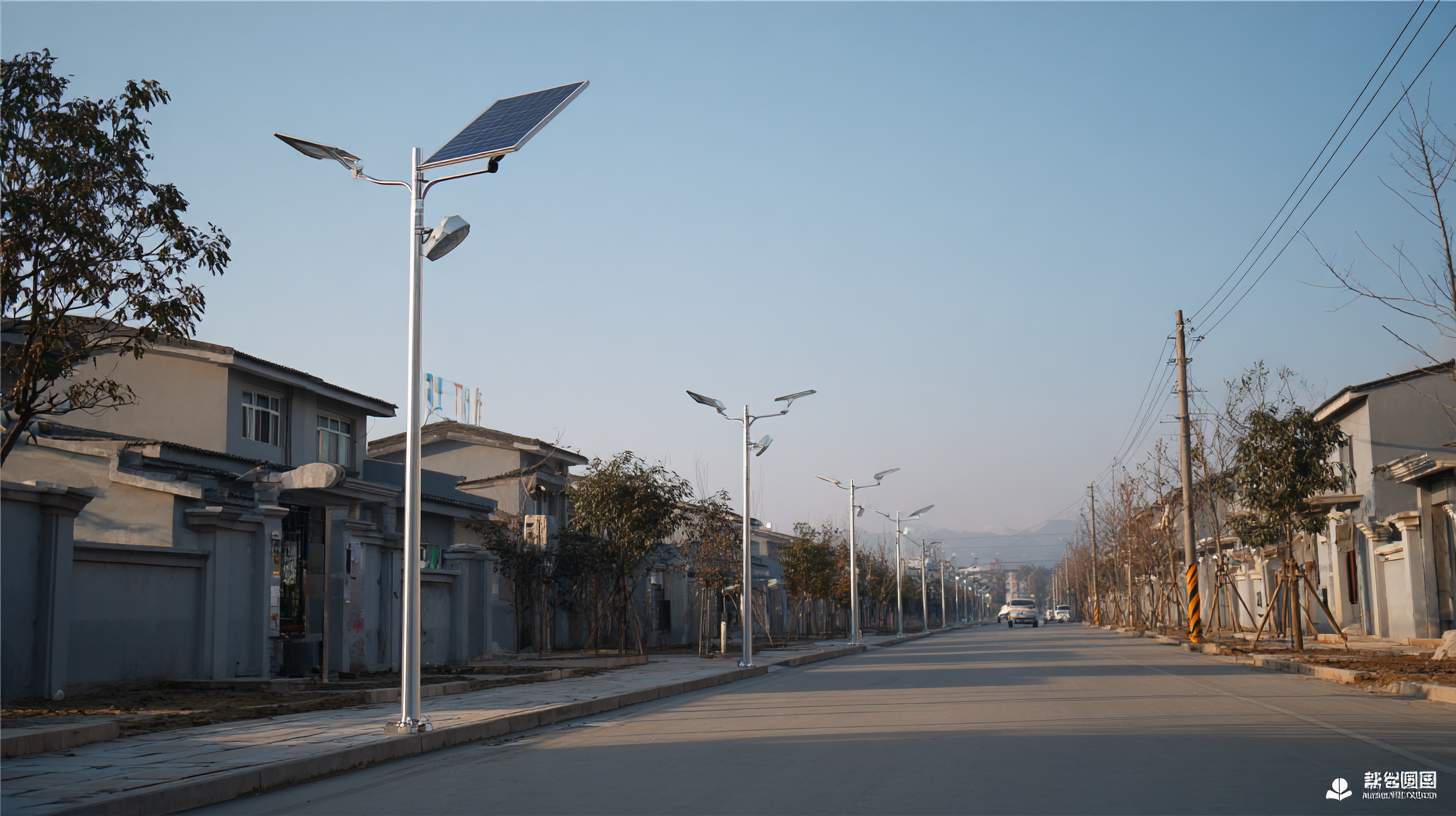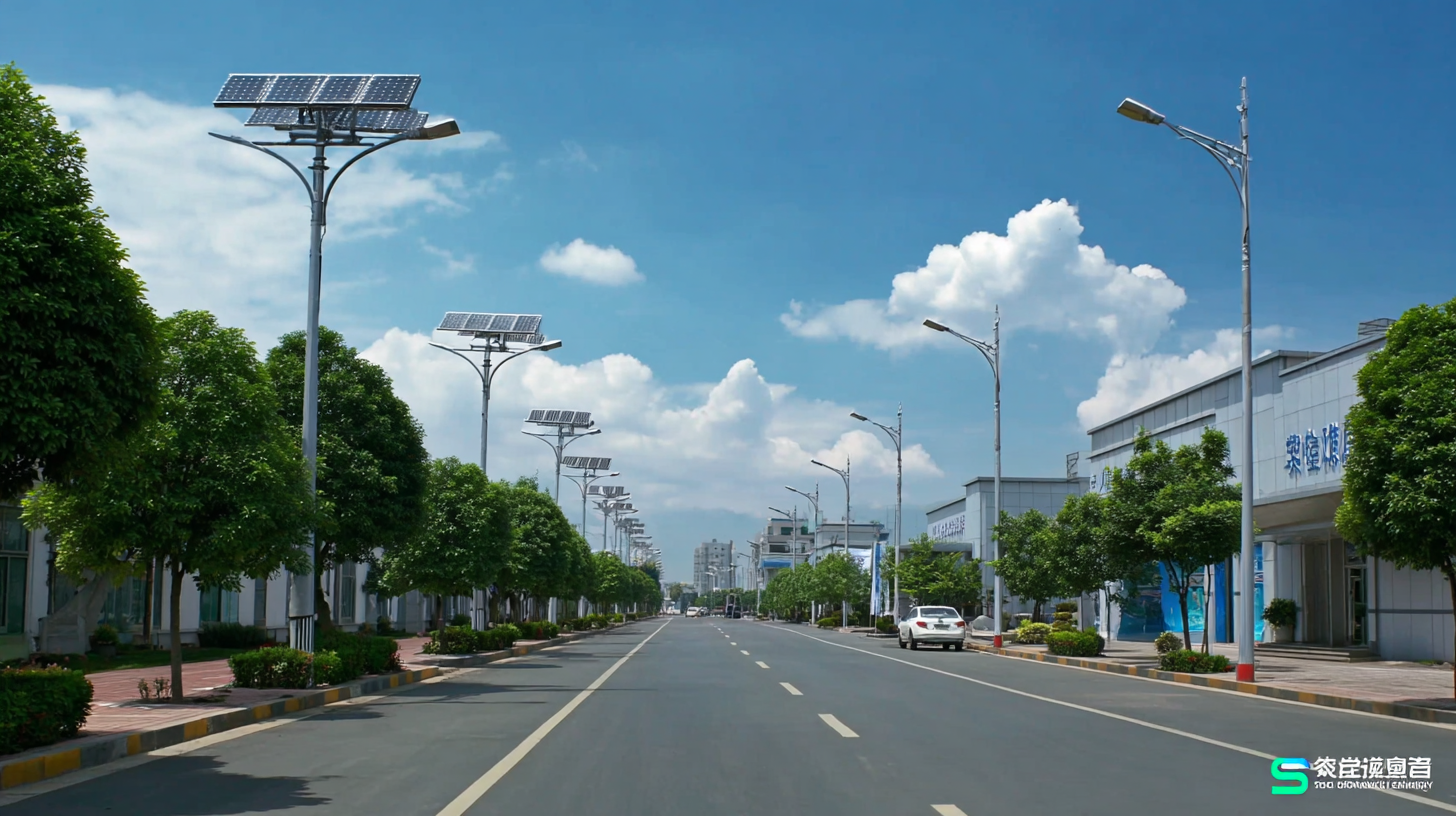China's Solar Street Lights Crafted for Global Trust and Quality Excellence
As the world increasingly turns its attention to sustainable energy solutions, solar street lights have emerged as a pivotal technology in urban infrastructure. In this blog, we delve into the exceptional craftsmanship and innovative designs behind China's solar street lights, which are gaining recognition for their reliability and quality excellence on a global scale.
 We will explore detailed technical specifications, including key performance metrics and the latest advancements in solar technology that elevate these products above the competition. By highlighting various top models, we aim to provide insights into how these solar street lights not only enhance public safety and visibility but also contribute significantly to environmental sustainability, ultimately building a foundation of trust with consumers and municipalities worldwide.
We will explore detailed technical specifications, including key performance metrics and the latest advancements in solar technology that elevate these products above the competition. By highlighting various top models, we aim to provide insights into how these solar street lights not only enhance public safety and visibility but also contribute significantly to environmental sustainability, ultimately building a foundation of trust with consumers and municipalities worldwide.
The Rising Demand for Solar Street Lights in Urban Development
The growing trend of urbanization has sparked an increased demand for sustainable and efficient lighting solutions, with solar street lights leading the way. According to a report by Grand View Research, the global solar street lighting market is projected to reach $16 billion by 2025, growing at a compound annual growth rate (CAGR) of 20.4%. This surge is driven by cities worldwide aiming to reduce their carbon footprint and embrace green technologies, making solar street lighting an ideal solution.
Moreover, the adoption of solar street lights is not just about environmental responsibility; it's also a smart economic choice. A study by the National Renewable Energy Laboratory indicates that solar street lights can reduce energy costs by up to 80% compared to traditional street lighting. As urban developers and municipalities look to optimize budgets while improving safety and aesthetics, the demand for high-quality solar solutions crafted in China is poised to rise. These lights not only offer long-term savings but also contribute to smarter, more sustainable urban landscapes, which are essential as the global population continues to grow and urban areas expand.
China's Solar Street Lights Crafted for Global Trust and Quality Excellence - The Rising Demand for Solar Street Lights in Urban Development
| City | Annual Demand (Units) | Quality Rating (out of 10) | Installation Cost (USD) | Average Lifespan (Years) |
|---|---|---|---|---|
| Beijing | 1500 | 9 | 1200 | 10 |
| Shanghai | 2200 | 8 | 1300 | 12 |
| Guangzhou | 1800 | 9 | 1250 | 11 |
| Shenzhen | 2000 | 9 | 1400 | 10 |
| Chengdu | 1200 | 8 | 1100 | 9 |
Key Features of China's Solar Street Lights that Ensure Quality Excellence
China's solar street lights have become the benchmark for quality excellence in the renewable energy sector, driven by essential features that promote sustainability and efficiency. One of the key attributes of these solar street lights is the integration of advanced photovoltaic technology, which enhances energy conversion rates. Research indicates that cutting-edge solar cells can achieve efficiencies exceeding 22%, significantly contributing to the reliability and longevity of these lighting solutions.
Moreover, the construction quality of solar street lights is paramount, involving materials that withstand harsh environmental conditions. The Ningbo Institute of Materials Technology and Engineering highlights two decades of advancements in materials research, resulting in robust solutions that ensure durability and performance under varying temperatures and weather patterns. This is crucial as urban areas increasingly face challenges related to energy shortages and the need for cleaner alternatives, reinforcing the role of solar infrastructure in urban planning.
Additionally, intelligent lighting controls and weak current systems are being incorporated to optimize energy use, ensuring that lights are only active when needed. This not only lowers energy consumption but also extends the lifespan of the lighting system, aligning with global sustainability goals and setting a precedent for future innovations in street lighting. As the world moves towards greener solutions, China's commitment to quality in solar street lights positions it as a global leader in enabling eco-friendly urban development.
Industry Standards and Certifications for Solar Street Light Manufacturing
 In the rapidly evolving world of solar street light manufacturing, adhering to industry standards and obtaining relevant certifications are paramount for ensuring product quality and fostering global trust. According to the International Electrotechnical Commission (IEC), compliance with IEC 60598-2-3 standards, which specifically address outdoor lighting fixtures, is essential for manufacturers aiming to meet global expectations. This certification not only affirms the safety and reliability of solar street lights but also plays a critical role in streamlining international trade.
In the rapidly evolving world of solar street light manufacturing, adhering to industry standards and obtaining relevant certifications are paramount for ensuring product quality and fostering global trust. According to the International Electrotechnical Commission (IEC), compliance with IEC 60598-2-3 standards, which specifically address outdoor lighting fixtures, is essential for manufacturers aiming to meet global expectations. This certification not only affirms the safety and reliability of solar street lights but also plays a critical role in streamlining international trade.
Moreover, the Global Solar Council reports that the solar energy market is expected to grow at a compound annual growth rate (CAGR) of 20% over the next five years. To leverage this growth, manufacturers are encouraged to pursue certifications such as ISO 9001, which emphasizes quality management systems. Implementing these systems ensures that products are consistently designed to meet client requirements and enhance customer satisfaction.
Tips: When selecting solar street lights, always look for products certified by recognized bodies, as this guarantees compliance with established safety and quality standards. Additionally, consider the manufacturer's experience and track record in the industry, as this often correlates with the reliability of their products. Prioritizing these factors can lead to higher levels of trust and satisfaction in your solar lighting solutions.
Comparative Analysis of Energy Savings from Solar vs. Traditional Street Lighting
As cities around the world strive to reduce energy consumption and promote sustainability,
the choice between solar and traditional street lighting has become increasingly relevant.
Traditional street lights, typically powered by non-renewable energy sources, not only incur high electricity costs but also
contribute to greenhouse gas emissions. In contrast, solar street lights harness the power of the sun, offering
a renewable solution that significantly reduces energy expenses. For example, a solar street light can save cities
up to 80% in energy costs compared to conventional lighting systems, leading to a substantial
decrease in operational expenditures over time.
 Moreover, solar street lights excel in providing consistent illumination without the reliance on the electrical grid.
This attribute proves particularly advantageous in remote areas where extending utility lines can be prohibitively
expensive. The efficiency of solar technologies continues to improve, with
advancements in battery storage and solar panel efficiency, enabling lights to operate effectively even during
cloudy days or nighttime. By investing in solar street lighting, cities not only champion energy savings but also
foster a commitment to environmentally friendly practices, paving the way for a cleaner and more sustainable urban future.
Moreover, solar street lights excel in providing consistent illumination without the reliance on the electrical grid.
This attribute proves particularly advantageous in remote areas where extending utility lines can be prohibitively
expensive. The efficiency of solar technologies continues to improve, with
advancements in battery storage and solar panel efficiency, enabling lights to operate effectively even during
cloudy days or nighttime. By investing in solar street lighting, cities not only champion energy savings but also
foster a commitment to environmentally friendly practices, paving the way for a cleaner and more sustainable urban future.
Case Studies: Successful Implementation of Solar Street Lights Globally
Globally, solar street lights have emerged as a sustainable and cost-effective solution for urban illumination. Case studies from various countries, including India and Brazil, illustrate the successful implementation of these systems. According to a report by the International Energy Agency (IEA), the use of solar street lighting has the potential to reduce energy costs by up to 80%, which is crucial for maintaining budgetary constraints in urban planning. In India, the city of Mumbai converted over 2,000 street lights to solar power, leading to a significant reduction in carbon emissions and an estimated savings of $1 million annually.
In Africa, countries such as Kenya have pioneered the deployment of solar street lights in rural communities where grid access is minimal. The World Bank estimates that solar street lights contribute to a 50% reduction in crime rates in these areas by improving visibility and enhancing safety. Additionally, the solar lighting sector is projected to grow at a CAGR of 20% from 2021 to 2026, illustrating a robust demand for sustainable and innovative lighting solutions in urban settings, reinforcing the need for quality craftsmanship and reliability in products made in China. With such compelling data, it’s clear that solar street lights are not just a temporary trend but a long-term investment in global infrastructure.
